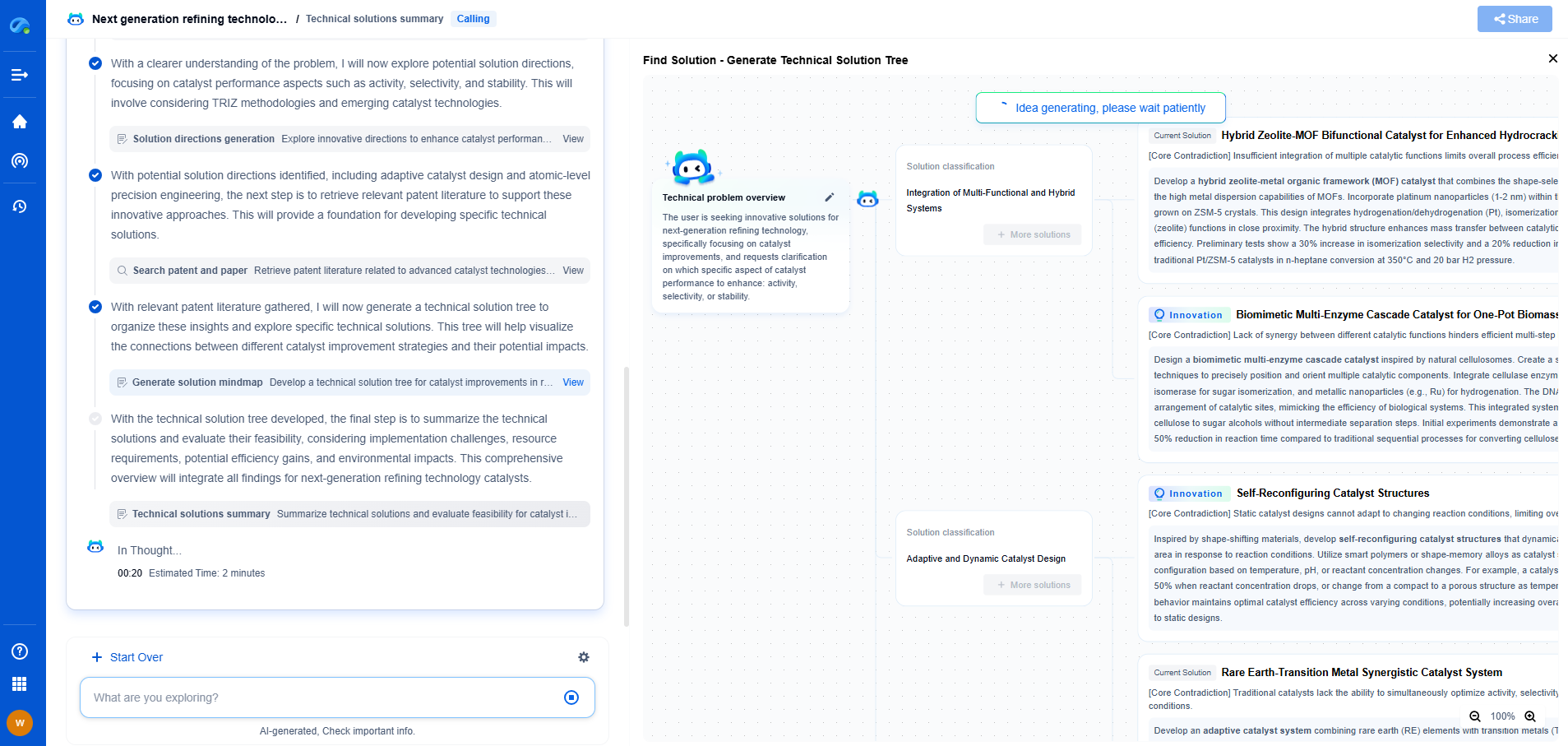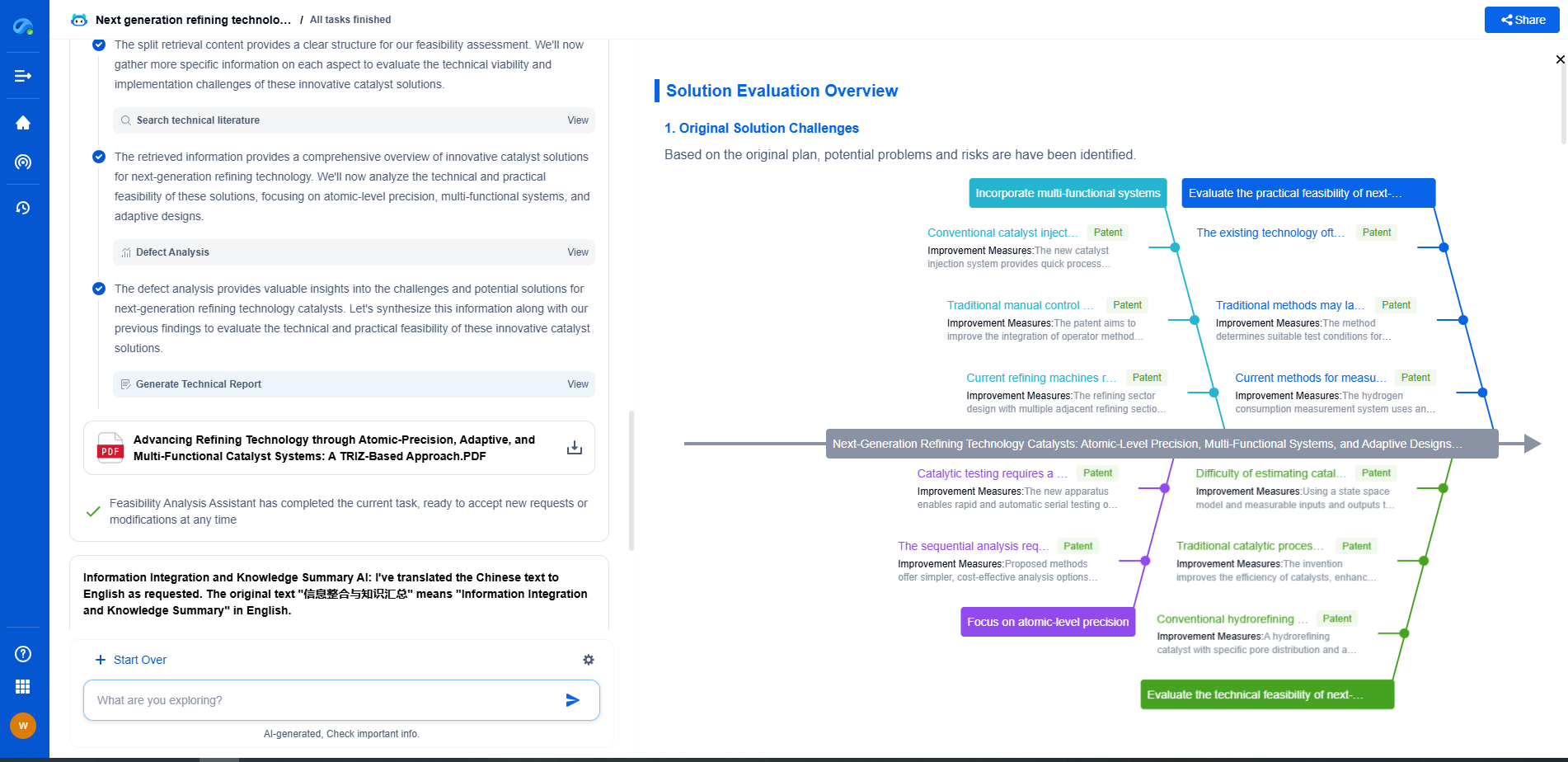How nanotechnology is changing the drilling fluids industry
JUN 20, 2025 |
Enhancing Drilling Fluid Properties
One of the most significant contributions of nanotechnology to drilling fluids is the ability to enhance their properties. Nanoscale particles are incredibly small, typically ranging between 1 and 100 nanometers. Due to their size and large surface area relative to volume, they exhibit unique physical and chemical properties. When incorporated into drilling fluids, nanoparticles can improve thermal conductivity, viscosity, and stability. For instance, silica and clay nanoparticles can be used to enhance the rheological properties of drilling fluids, making them more effective in transporting drill cuttings from the borehole to the surface.
Improving Lubrication and Reducing Wear
Drilling operations often face challenges related to friction and wear of drill bits and equipment. Nanotechnology addresses these issues by offering superior lubrication solutions. Nanoparticles such as graphene and molybdenum disulfide have been explored for their excellent lubricating properties. When added to drilling fluids, these nanoparticles form a protective layer on the surfaces of drilling tools, reducing friction and wear. This results in prolonged equipment life, reduced downtime, and lower maintenance costs, ultimately improving the overall efficiency of drilling operations.
Environmental Benefits
The environmental impact of drilling activities is a growing concern in the industry and among regulatory bodies. Traditional drilling fluids can pose environmental and disposal challenges. However, nanotechnology provides avenues to develop more environmentally friendly drilling fluids. For example, biodegradable nanoparticles can be used to formulate drilling fluids that are less toxic and easier to dispose of. Additionally, nanoparticles can enhance the efficiency of drilling fluids, reducing the volume required and, subsequently, the waste generated. By optimizing the performance of drilling fluids through nanotechnology, the industry can align more closely with environmental regulations and sustainability goals.
Real-time Monitoring and Control
Another exciting application of nanotechnology in drilling fluids is the potential for real-time monitoring and control. Nanoparticles can be engineered to possess magnetic or optical properties that allow them to serve as indicators of various parameters within the wellbore environment. By integrating such nanoparticles into drilling fluids, operators can gain instant feedback on temperature, pressure, and fluid density, among other factors. This information can be critical for making timely decisions, preventing blowouts, and optimizing the drilling process for better results.
Economic Implications
While the initial investment in nanotechnology-based drilling fluids might be higher, the long-term economic benefits can be substantial. Improved efficiency and reduced equipment wear translate into lower operational costs. Moreover, enhanced performance means that drilling projects can be completed faster and more effectively, potentially reducing the overall expenses associated with exploration and extraction activities. As the technology matures and becomes more widely adopted, the costs are expected to decrease, making nanotechnology a financially viable option for more companies in the drilling sector.
Challenges and Future Perspectives
Despite the promising advantages, there are challenges to overcome before nanotechnology can be fully integrated into the drilling fluids industry. Concerns regarding the scalability of nanoparticle production, potential health risks during handling, and regulatory approval are significant hurdles. Additionally, the long-term effects of nanoparticles on the environment and human health require thorough investigation.
Nevertheless, ongoing research and development are likely to address these challenges. As the understanding of nanotechnology deepens, and as more companies invest in nanotechnology research, the future of the drilling fluids industry seems poised for a nanoscale revolution.
In conclusion, nanotechnology is undeniably influencing the future of the drilling fluids industry. By offering solutions that enhance performance, ensure sustainability, and bring economic benefits, nanotechnology is paving the way for more efficient and environmentally responsible drilling practices. As the technology continues to evolve, its role in the industry will likely expand, ushering in a new era of innovation and progress.
Navigating the Complexities of Drilling Innovation? Let AI Do the Heavy Lifting
In an industry where subsurface conditions, materials science, and drilling dynamics evolve rapidly, staying ahead of technical innovation and protecting your intellectual property can be overwhelming.
Patsnap Eureka, our cutting-edge AI assistant, is built for R&D and IP professionals in high-tech industries like drilling technologies. Whether you're optimizing rotary steerable systems, evaluating high-temperature materials, or exploring next-gen automation in directional drilling, Eureka enables real-time analysis of the latest patents, technology landscapes, and competitive movements—all from one intelligent, intuitive platform.
Ready to accelerate your development cycle and make strategic decisions with confidence? Explore Patsnap Eureka today—where smart drilling starts with smarter insights.
- R&D
- Intellectual Property
- Life Sciences
- Materials
- Tech Scout
- Unparalleled Data Quality
- Higher Quality Content
- 60% Fewer Hallucinations
Browse by: Latest US Patents, China's latest patents, Technical Efficacy Thesaurus, Application Domain, Technology Topic, Popular Technical Reports.
© 2025 PatSnap. All rights reserved.Legal|Privacy policy|Modern Slavery Act Transparency Statement|Sitemap|About US| Contact US: help@patsnap.com

